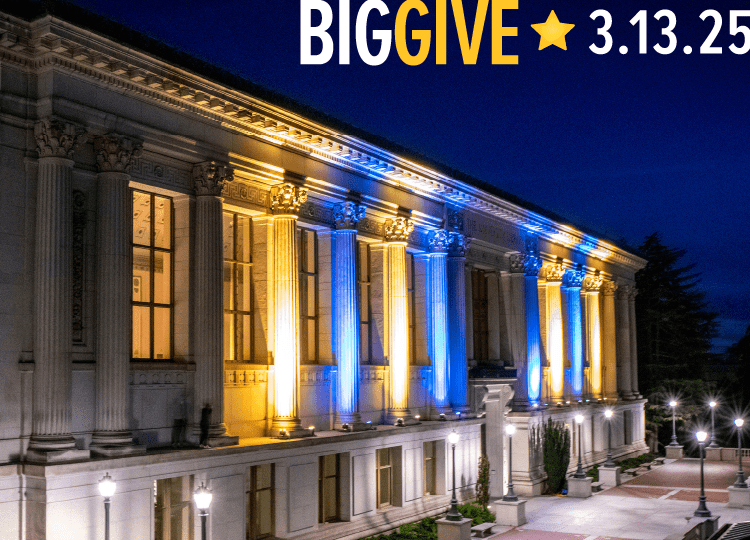PBS’s MASTERPIECE FRANCHISE had two runaway hits this year, both British period productions. One was no surprise: All Creatures Great and Small, which already had a built-in audience from the original series that ran from 1978 to 1990.
But the other came out of the blue: Miss Scarlet and the Duke, a detective story set in 1880s Victorian England, featuring a plucky heroine, a dashing but slightly sketchy leading man, plot twists, and a will-they-won’t-they tension that harks back to Moonlighting in its prime.
And presiding over it all is executive producer Harvey Myman, who got his bachelor’s from Cal in English literature in 1970 and his master’s in journalism in 1992.
“I think I hold the record for the amount of time between my coursework and my thesis,” he says. “I came back to the J-school to give the commencement address, and the dean said, ‘Harvey, it’s embarrassing that you haven’t gotten your degree.’ So I finally finished my thesis.”
By then he was the managing editor for news at the Orange County Register and was instrumental in turning the paper from an afterthought into a Pulitzer Prize winner with a national reputation. The first Pulitzer was for the photo coverage of the 1984 Olympic Games, which he supervised.
It was a complete makeover. The company that owned the Register, Freedom Newspapers, had a deep libertarian bent that affected all parts of the operation. “They had word lists. Martin Luther King could not be referred to as Dr. King; public schools were ‘tax-supported schools.’ It was insane.”
One of the assurances he was given coming in was that the newsroom would be completely separate from the editorial page. And that independence was occasionally reflected in editorials that would complain about the news coverage.
“It was like starting from scratch. We were a little like the old Oakland Raiders. We had these wildly talented people, a lot of whom were misfits that we brought in from around the country. For whatever reasons, things didn’t quite work out for them at the New York Times or the Dallas Morning News; but they were terrific writers and phenomenal reporters, and we created a home for them.
“I started exploring the notion of going to entertainment. I didn’t feel confident that I could sit down and write spec scripts, so I basically sold myself as a guy who can read and write English and manage people.”
“On the day we found out we were one of the finalists [for the Pulitzer], I called the five photographers into my office, and said, ‘I would love you guys to win this; but win or lose, it doesn’t make what you guys did any better or worse.’ But when we won, it was like a World Series locker room, with champagne everywhere.”
Other papers soon came calling, including the New York Times. “Because of the nature of newspapers, at some point you become kind of cute and popular. But I thought, ‘Do I really want to do another newspaper? Or do I want to do something completely different?’ And I started exploring the notion of going to entertainment. I didn’t feel confident that I could sit down and write spec scripts, so I basically sold myself as a guy who can read and write English and manage people.”
He started at ABC as a programming executive. “After about a year they moved me to comedy development, and I worked on a bunch of them, including Roseanne and Home Improvement. Looking back, they gave me a lot of difficult shows and some of the more difficult showrunners because writers have always been my people, and most executives are terrified of writers. So all those managing editor skills translated to being an executive, and ultimately an executive producer.”
After about five years at ABC, Myman joined the Carsey-Werner company, home of That ’70s Show and 3rd Rock, then moved to Sony as an executive, then to HBO before forming his own production company, Element 8 Entertainment, with two partners, one of whom is also an Old Blue, Jin Ishimoto ’90. Their first production: Miss Scarlet.
“We basically shot the six episodes in season one in 50-some-odd days straight. Everybody was out to pull together; this was not a luxury cruise. We had a great director, Declan O’Dwyer, who really helped create a vision and a look for the show. And it was obvious that this was a labor of love for everyone—the costume designers, the set designers, the writers, the actors—and when that happens and it all comes together, it’s a really beautiful thing.”
And that’s reflected in the ratings, so much that PBS has already picked up the option for the next season, with planning and prepping already underway for the season after that. “Being an executive producer is a lot like being a managing editor again,” says Myman. “It’s my job to help make a terrific thing even better.”
THE SUCCESS OF ANCIENT ROME was at least partly due to engineering marvels like the aqueducts that delivered a reliable supply of water to all social strata of the Roman population for hundreds of years.
If anyone knows the role that water plays in keeping societies stable, it’s Jennifer Capitolo, M.S.W. ’03, executive director of the California Water Association. Her job is to advocate on behalf of water utilities that are regulated by the California Public Utilities Commission—as opposed to water utilities that are owned by local governments—and the people they serve. “At CWA, the members’ customers are our customers,” she says.
And in this era, when California’s population keeps growing but its water supply does not, a large part of that job consists of making sure the cost doesn’t fall unevenly.
“Affordability is something that we’re all concerned about,” she says. “Water continues to increase in price just like everything else. And when you’re providing an essential service, and water is essential, we have to figure out how to balance affordability and make sure that no one is struggling to pay for something that is essential.”
To this end, she’s trying to convince the state to scrap a separate program for California PUC-regulated utilities in which some customers have to pay twice for the same service—directly as monthly rates on their water bills and indirectly as taxpayers—and replace it with a single system that creates a statewide, pooled low-income ratepayer assistance program and amortizes the low-income discount more evenly throughout the whole state.
A real life example: San Gabriel Valley, where almost all of the communities are low-income. “So when you try to create a local program to offer a discount,” Capitolo says, “you end up having low-income or middle-income people subsidizing the very low-income because you don’t have a high-income population in the water utility’s service area.” The solution, she says, is to pool the cost statewide, where all water utilities in the state pay into a single fund, and the program is administered statewide.
“[This problem] is unique to water utilities because we have 7,000 drinking water utilities in California; and when you have 7,000 systems, they’re very small and very localized geographically, so you don’t have that ability to redistribute wealth. Compare that to energy utilities: We have three large energy utilities, and those three represent big swaths of the state of California. So they have a good mix of high income and low income to make those programs work. But because there are so many water utilities, and we’re so spread out all across the state, we don’t have the ability to have a local program. You need a statewide program.”
Naturally, that requires a lot of meetings with decision makers in Sacramento, and Capitolo says it was the lessons she learned at Cal that gave her the skills to do that.
“I’m really a social worker working in the water industry. Part of what I do is helping to build consensus public policy ideas and just listening. That’s what we try to do in the social work field: listening to people and understanding their points of view and where they’re coming from and why they’re sitting at that table with the position that they have.”
It’s not a job she ever thought she’d have. “I didn’t choose water; water chose me.”
Unhappily, her two sons, ages 5 and 9, are unimpressed. “I’ve been telling them water jokes lately,” she says. “And they don’t think I’m funny at all.”
FINALLY, DO YOU REMEMBER Eric Stevens ’12, the captain of the football team, and his wife, Cal soccer star Amanda Glass Stevens ’13, who have been battling his Lou Gehrig’s disease, which was diagnosed 30 days after their wedding? The fight goes on, but in the meantime a third person has joined the team. Meet Peyton James Stevens, Class of 2044, who was born January 21. Weight: 6 lbs. 4 oz. Height: 19 inches. “This past week has been a dream,” Amanda wrote on Instagram. “You are just what we needed, little girl.”
Reach Martin Snapp at catman442@comcast.net.



















